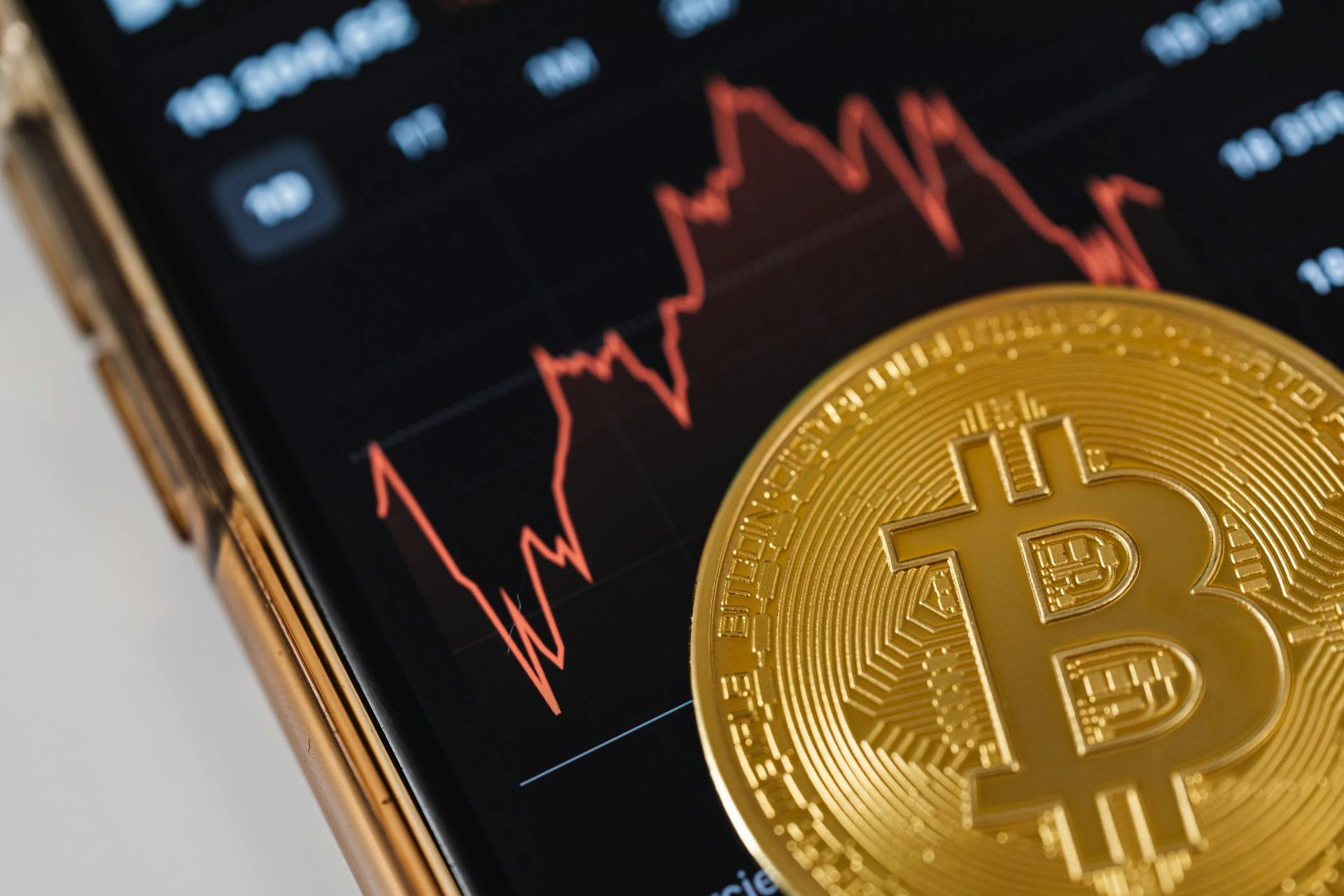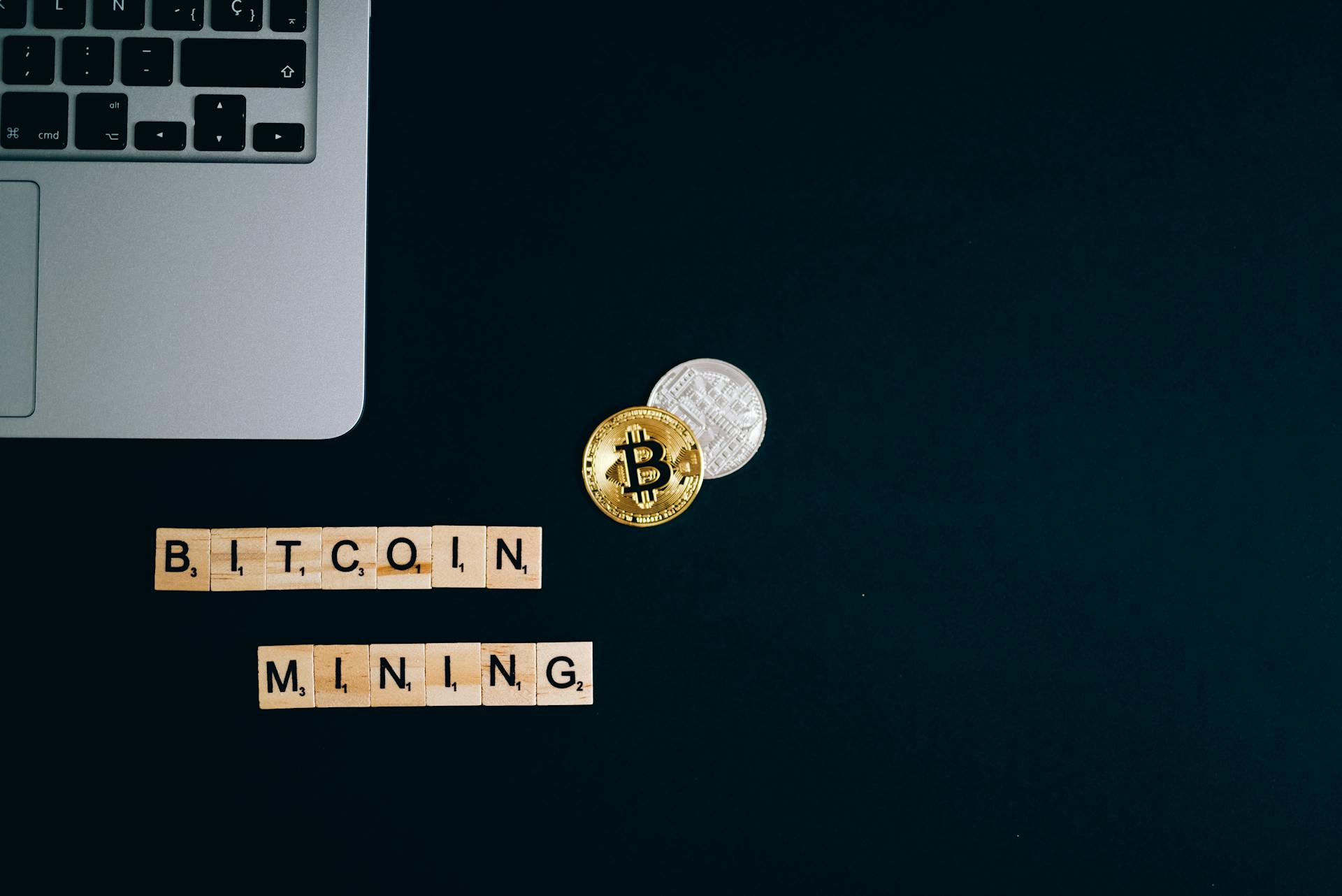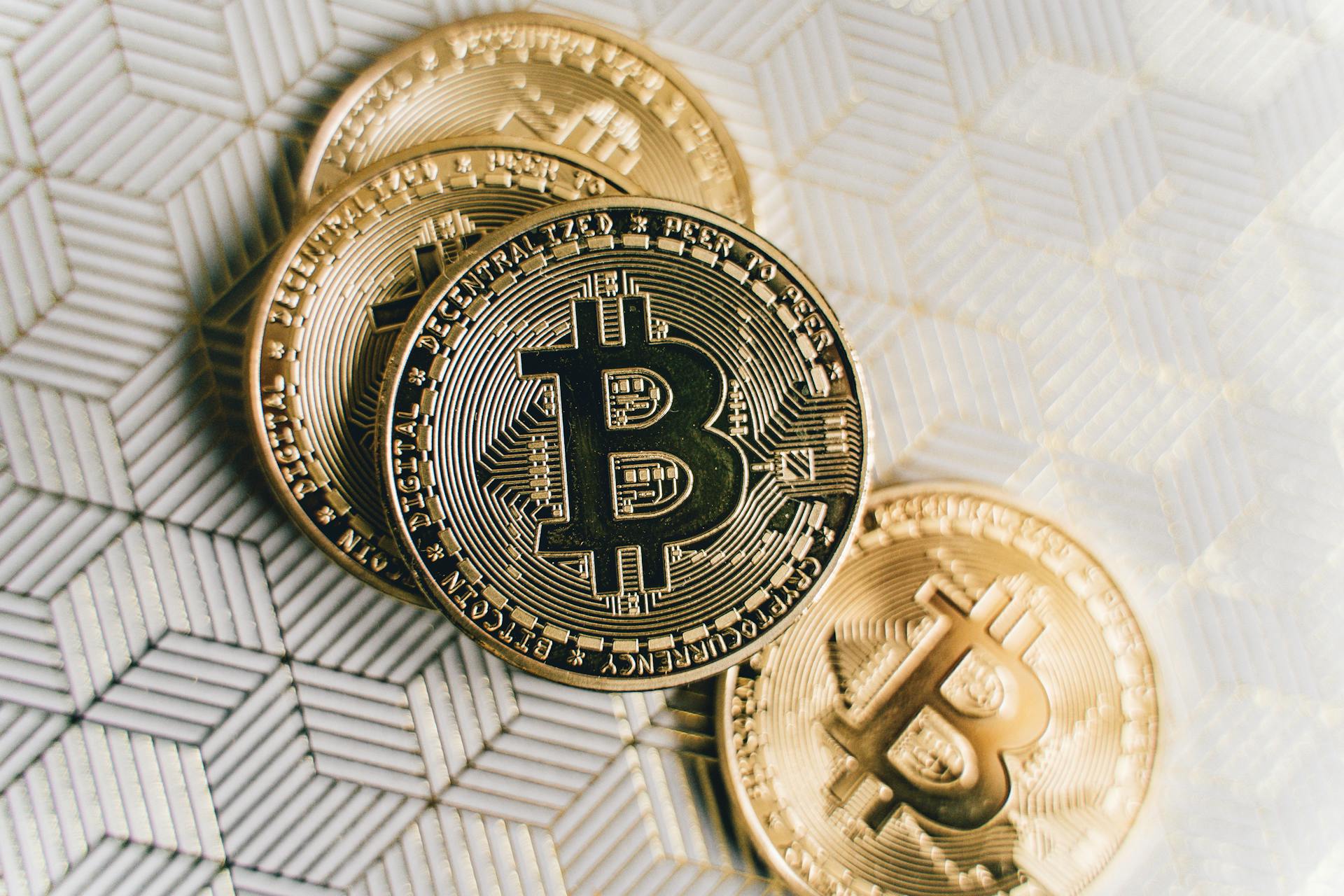
The concept of Bitcoins running out may seem daunting, but it's essential to understand the mechanics behind it. The total supply of Bitcoins is capped at 21 million, as outlined in the Bitcoin protocol.
This cap was intentionally set by the creator of Bitcoin, Satoshi Nakamoto, to prevent inflation and maintain the cryptocurrency's value. The idea is that as more people use and invest in Bitcoins, the value will increase, making each coin more valuable.
The process of mining Bitcoins, which involves solving complex mathematical problems to validate transactions, also plays a crucial role in the limited supply. Miners are rewarded with newly minted Bitcoins for their efforts, but the reward is halved every 210,000 blocks, or approximately every four years.
Bitcoin Supply
The Bitcoin supply is capped at 21 million, and this limit cannot be changed without a consensus among all network participants.
As of December 22, 2024, 19.9 million bitcoins have been mined, leaving about 1.1 million bitcoins to release.
See what others are reading: 1 Million Bitcoins
The final bitcoin is not expected to be generated until 2140, due to the halving of the block reward every four years.
With the current rate of halving, there are 29 more halvings until the final reward of one satoshi is awarded.
Although a maximum of 21 million bitcoins can be minted, it's likely that the number of bitcoins circulating remains substantially below that number due to lost or inaccessible wallets.
Up to 20% of the Bitcoin already issued may be permanently lost, according to a June 2020 study by the crypto forensics firm Chainalysis.
Over 3.7 million Bitcoins (over 20% of total supply) have been lost over time, according to blockchain data firm Chainalysis.
The total bitcoin supply is capped at 21 million, and it's estimated that over 94% of all Bitcoins have been mined as of September 2024.
Miners will earn revenue solely from transaction fees instead of block rewards after all 21 million Bitcoins are mined.
This shift could potentially affect Bitcoin miners, but they may still be able to profit from high transaction fees, especially if Bitcoin serves as a store of value rather than for daily purchases.
Readers also liked: Chainalysis Crypto Crime Report
Halving and Mining
Bitcoin's supply limit is designed to be capped at 21 million, and it's estimated that this limit will be reached around 2140. However, the real question is when will the mining process become unprofitable for miners.
The Bitcoin halving cycle happens every 210,000 blocks mined, which equates to roughly 4 years for each halving to take place. This means that the next halving is projected to happen in 2028.
The block reward is cut in half every 4 years, and as of 2024, the current block reward is 3.125 bitcoins. After the next halving, the block reward will be reduced to 1.5625 bitcoins.
Mining is the process of verifying transactions and opening new blocks, which will still need to be done even after the supply limit is reached. Mining fees will likely continue to be charged, and they may increase to compensate miners for their expenses.
Here's a brief overview of the Bitcoin halving schedule:
- 2009: 50 BTC
- 2012: 25 BTC
- 2016: 12.5 BTC
- 2020: 6.25 BTC
- 2024: 3.125 BTC
- 2028: 1.5625 BTC
As you can see, the block reward has been reduced by half every 4 years, and it will continue to do so until the supply limit is reached. This means that the mining process will become increasingly unprofitable for miners over time.
However, it's worth noting that miners can still earn income from transaction fees, which are not affected by the halving. In fact, transaction fees are expected to increase as more people use Bitcoin, helping miners to earn more revenue.
The difficulty adjustment algorithm also ensures that miners who continue to mine will see increased returns due to the reduced competition. This is because the difficulty of mining declines when the total hash rate declines, making it easier for miners to find a block and claim the reward.
So, while the halving will make the mining process more challenging for miners, it's not the end of the world. Miners will still be able to earn revenue from transaction fees, and the difficulty adjustment algorithm will help to ensure that they remain profitable.
Take a look at this: Jpm Coin Revenue
Mining and Economics
Bitcoin's mining process is crucial to its existence, and it's influenced by economics in many ways. Miners earn income from both the new bitcoin they receive from the block subsidy and the transaction fees users pay.
The block subsidy, which is the reward miners receive for mining a block, is cut in half every four years, or so-called "halving events." This reduction makes Bitcoin scarcer over time and slows the release of new coins into circulation.
Miners will likely continue charging mining fees when Bitcoin reaches its supply limit, as mining is the process of verifying transactions and opening new blocks, which will still need to be done.
Transaction fees become a primary source of income for Bitcoin miners after the block subsidy is cut in half. As more people use Bitcoin, transaction demand rises, and fees increase, helping miners earn more.
The difficulty adjustment algorithm ensures that a miner's expected revenue is dependent on their relative share of the total Bitcoin hash rate. When the total hash rate declines, the difficulty of mining declines as well, increasing profitability for miners who continue to mine.
The price appreciation of Bitcoin can turn a loss in Bitcoin-denominated revenue into a gain in fiat-denominated revenue. A vast majority of miners still pay their costs in fiat currency, so they are more concerned with their fiat-denominated revenue than their Bitcoin-denominated revenue.
You might like: How to Find New Crypto Coins Early
Here's a breakdown of the factors that commingle to maintain miner participation and network security after a halving:
- Transaction fees become a primary source of income for miners
- Difficulty adjustments ensure miners' expected revenue is dependent on their relative share of the total Bitcoin hash rate
- The price appreciation of Bitcoin can turn a loss in Bitcoin-denominated revenue into a gain in fiat-denominated revenue
These factors have proven resilient and adaptable over the years, ensuring that the Bitcoin community remains secure and energy-efficient.
Efficient Mining with Technology
Mining Bitcoin requires significant amounts of energy, but technological advancements are making it more efficient.
Advancements in hardware and software are improving mining operations. Better hardware and software can make mining more efficient and even change the way it's done altogether.
Better hardware, such as ASIC miners, are being developed to increase operational efficiency and profits. The ASIC S19 Pro miner, for example, provides the quickest returns on investment for miners who invest in wind power plants for Bitcoin mining.
Hardware optimization is also an area of improvement, with manufacturers constantly making advancements to chip designs and finding new ways to keep things cool. Some miners are even dipped in special liquids to help them get rid of heat more effectively, using less energy overall.
Second-layer solutions, such as the Lightning Network, can also make mining more efficient by taking care of smaller transactions and letting miners focus on bigger ones that make them more money.
See what others are reading: Bitcoin Mining Energy Consumption
Transaction Fees and Security
Transaction fees are expected to become a primary source of income for Bitcoin miners as the block subsidy is cut in half. This shift could significantly change the dynamics of the network.
Miners will likely continue charging mining fees even when Bitcoin's supply limit is reached, as mining is still necessary to verify transactions and open new blocks. Mining fees may increase to compensate miners for their expenses.
The reliance on transaction fees could lead to higher costs for users, with slower transaction times and increased fees as demand for processing space grows. However, proponents argue that Bitcoin's growing adoption and increasing transaction volume will naturally create a robust fee market.
Bitcoin's network security is built around the assumption that miners have sufficient financial incentive to continue securing the network. If mining becomes unprofitable, some fear that the network could become more vulnerable to attacks.
Transaction Fees
Transaction fees are a crucial aspect of the Bitcoin network, and they're going to become even more important in the future.
As the block subsidy is cut in half, transaction fees will become a primary source of income for Bitcoin miners. This is because the block subsidy is being reduced, but transaction fees are not.
Miners will still need to verify transactions and open new blocks, so they'll continue to charge mining fees, which may increase to compensate for their expenses.
The reliance on transaction fees could lead to higher costs for users, especially if fewer miners continue to support the network due to lower profitability.
However, proponents argue that Bitcoin's growing adoption and increasing transaction volume will create a robust fee market, potentially offsetting the loss of mining rewards.
Transaction demand rises as more people use Bitcoin, and fees increase to have transactions confirmed in a timely manner.
The Lightning Network provides cheaper and faster ways of transferring Bitcoin, which could alleviate congestion on the main blockchain.
As a result, not all Bitcoin transactions need to be settled on-chain, which could reduce fees for users.
The dynamic of the mining difficulty mechanism ensures that new blocks are created roughly every 10 minutes, regardless of the changes in technological power dedicated to mining.
Readers also liked: Bitcoins Transactions per Second
This mechanism also encourages more people to join the industry, which leads to an increase in the computational power required to solve cryptographic puzzles, resulting in a continuous arms race for the most powerful and efficient mining hardware.
This trend affects smaller miners, who struggle to compete with larger players wielding the latest technological advancements.
The end of block rewards in 2140 marks a significant change for the network, but the Bitcoin community has proven resilient and adaptable over the years.
Miners may increasingly rely on transaction fees, and innovations in mining technology could help keep the network secure and energy-efficient.
Network Security Concerns
Bitcoin's network security is based on the assumption that miners have sufficient financial incentive to continue securing the network. This incentive is currently provided by block rewards.
The more mining happening on the network, measured by hash rate, the more secure the Bitcoin network is. Miners expend energy to solve complex mathematical problems, ensuring that no single party can take control of the network.
If mining becomes unprofitable due to the absence of block rewards, some fear that the network could become more vulnerable to attacks. This is because miners may drop out, making it easier for malicious actors to launch attacks.
The rewards for miners are cut in half, their income drops, but there are several reasons why miners could continue mine profitably and preserve Bitcoin security despite a halving of the subsidy.
Consider reading: Crypto Coin Rewards
Future of Bitcoin
The future of Bitcoin is uncertain, but one thing is clear: the network will continue to adapt and evolve. In 2140, the end of block rewards marks a significant change for the network, but the Bitcoin community has proven resilient and adaptable over the years.
As the block reward halves in 2028, the time it takes to mine one bitcoin will increase. About 0.15625 bitcoins will be mined per minute, compared to 0.3125 bitcoins per minute currently.
Miners may increasingly rely on transaction fees, which could lead to a surge in fees, as seen in 2020. The Bitcoin community is already exploring ways to alleviate congestion on the main blockchain, such as the Lightning Network.
Broaden your view: Block Reward
The decentralized nature of Bitcoin ensures that any changes to the protocol would require broad consensus among participants, preventing any single entity from drastically altering the network's trajectory. This ensures that the network remains secure and energy-efficient.
Here's a rough estimate of the time it takes to mine one bitcoin, based on the current block reward and block production time:
Keep in mind that the blockchain doesn't award coins by the minute, but rather by block. However, this gives you an idea of how the mining process will change over time.
Sources
- https://www.investopedia.com/tech/what-happens-bitcoin-after-21-million-mined/
- https://www.bitdegree.org/halving/next-bitcoin-halving-dates
- https://river.com/learn/what-will-happen-after-all-bitcoin-mined/
- https://ezblockchain.net/article/when-will-bitcoin-mining-become-unprofitable-2/
- https://www.rockitcoin.com/when-will-the-last-bitcoin-be-mined/
Featured Images: pexels.com


